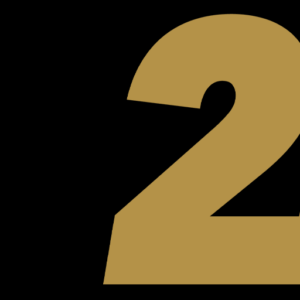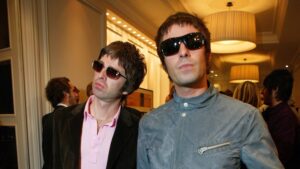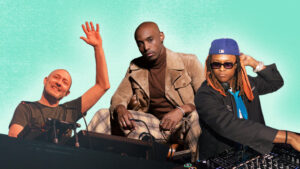House Music’s Big Pop Moment is Long Overdue


Source: Youtube
The recent embrace of house music by pop’s elite is putting the genre on its largest platform to date.
Once relegated to sweat-stained club floors and limit-testing sound systems, house music is currently at the center of a fascinating transformation in contemporary pop. From The Weeknd‘s French house experiments on Dawn FM to Drake‘s Jersey and Baltimore club-obsessed surprise album, Honestly, Nevermind, to Beyoncé‘s nostalgic new single, “Break My Soul,” dance music as a whole has been a dominant force in the first half of 2022. But you don’t need to be a particularly astute cultural observer to appreciate just how heavily house has factored into the latest releases from some of pop’s most decorated artists or just how much it deserves the scale of the spotlight it’s being awarded.
A distinctly American strain of electronic music birthed in Chicago out of disco’s ashes and almost instantly exported across the pond, house has been a wildly influential and ever-evolving segment of dance music globally for the better part of the last 50 years. Throughout the early-80s, first-wave producers like Frankie Knuckles, Larry Heard, and Ron Hardy, built the framework out of four-to-the-floor drum programs, wide-panning synthesizers, and footwork-friendly BPMs (typically sitting somewhere between 120 and 130.) Four hours east of the Windy City, a more minimalistic and euro-pop-infused form of early electronica was developing in Detroit. Pioneered by The Belleville Three, a group of childhood friends comprising Juan Atkins, Derrick May, and Kevin Saunderson, Techno was a sinister sister sound to Chicago’s house movement, ramping up the pace and width of compositions with increasingly sophisticated consumer hardware like the DR-55 drum machine, Korg’s MS-10 monophonic synthesizer, and Roland’s legendary, and now ubiquitous, TR-808.
By the end of the decade, traces of those foundational elements could be found in breakout club anthems, positioning house to have its first major pop moment. Songs like Crystal Waters’ “Gypsey Woman,” Robin S.’s “Show Me Love,” Deee-Lite’s “Groove is in The Heart,” and The Bucketheads’ “The Bomb,” conquered charts and radio play for the first half of the ’90s, sparking a worldwide fixation on dance and house music. But even after its most visible and commercially viable stretch (arguably piquing when Madonna dipped a toe in with her fifth studio album, Erotica,) club music struggled to climb out of the fringes. At the close of the ’90s, house, techno, and virtually all shades of dance and electronic music became hyper-regionalized, manifesting in city-specific micro-genres in satellite scenes bubbling up along I-95 in Baltimore, New Jersey, Philadelphia, and as far south as Miami, where new generations of black and brown kids were developing their own club cultures, etiquettes, and production palettes. Meanwhile, in Europe, DJs and producers like Daft Punk, The Chemical Brothers, and The Prodigy, were leading an overseas movement with their own respective innovations.
The cross-pond crossovers brought club music to previously unseen heights, but also fed the festival-fueled foundry that became EDM. This not only blurred the history of house and its Black originators, but siphoned attention away from the stateside outposts for new and inventive forms of electronic music. As a result, the aughts, early and late, were dominated by mostly white male artists spinning mostly sterilized takes on various electronic genres for absolutely massive live audiences, which served only to make a handful of labels a ton of money while further distorting house music’s narrative.
In the following years, the rise of independent music distributors aided a needed and necessary course correction. Soundcloud, Bandcamp, Mixcloud, and the like, offered musicians across genres the most direct line to their fans yet. Suddenly, festivals and the label system were no longer the only avenues for music discovery, and electronic music was an almost instant beneficiary. In 2012, Azealia Banks stormed the stage with an unexpected revival of hip-house on her 1991 EP. Anchored by the hit single “212,” the four-song project served as the opening pages for what could be considered house music’s next great chapter. But the New York rapper wasn’t the only artist rebuilding a nearly forgotten bridge between rap and electronic music. In the early 2010s, a relatively unknown producer from Montreal was following a similar track, stitching intricately chopped samples into four-to-the-floor drum programs with just the right amount of swing.
First through a litany of beat tape drops and later, with an unhinged remix run that made him one of the most coveted producers of the decade, Kaytranada signaled a righteous resurgence of house was already underway. After years of developing his sound in — and around — the thriving and wildly influential Soulection collective, the producer delivered his 2016 debut studio album 99.9%, which went on to become a unanimous darling of critics and fans alike. Not long after Kaytra’s ceiling-smashing entry, house began to seep into some of the more experimental sectors of rap’s mainstream. With the producer’s help, Goldlink demonstrated an uncanny aptitude for rapid-fire wordplay over thumping uptempo production on his 2017 debut, At What Cost. Later that year, Vince Staples dove deep into the electronic currents with his sophomore album, The Big Fish Theory. Elsewhere in music, rising R&B and pop stars like Dawn Richard (on 2021’s Second Line,) and Tinashe (on 2021’s 333,) were utilizing shades of house, bounce, and techno, in their own entrancing electronic experiments.
All of this brings us just about up to the present day, when half of Billboard’s biggest charts are topped by an album wholly indebted to house music’s decade of swelling sovereignty in popular music. In fact, Drake’s Honestly, Nevermind is not only the number one album in the country but, on status and reach alone, will very likely go down as the highest-selling house album of all time. Paired with Beyoncé’s “Break My Soul” (currently sitting at number one on the Digital Song Sales chart) — and looming suspicions of her own house project arriving in the weeks ahead — the genre has officially been embraced by pop music’s elite. While it will certainly be worth monitoring how two of music’s biggest names carry and expand its legacy, which of the genre’s mothers and fathers finally get their flowers, and the types of innovations this moment inspires, house music is currently on its largest platform to date — and it’s long overdue.









